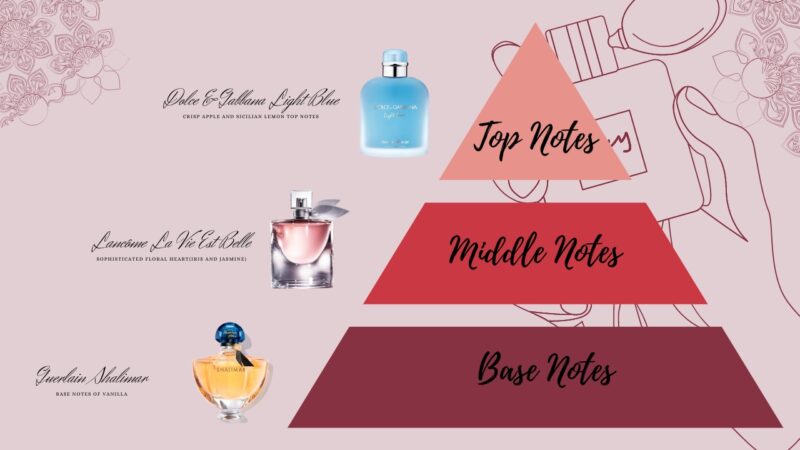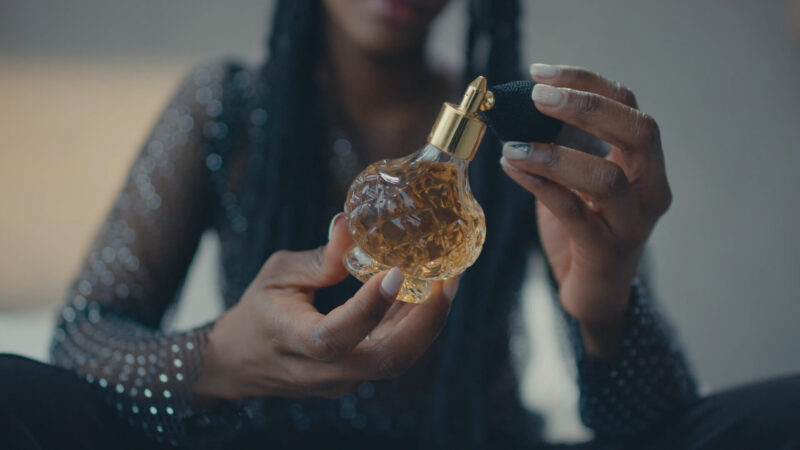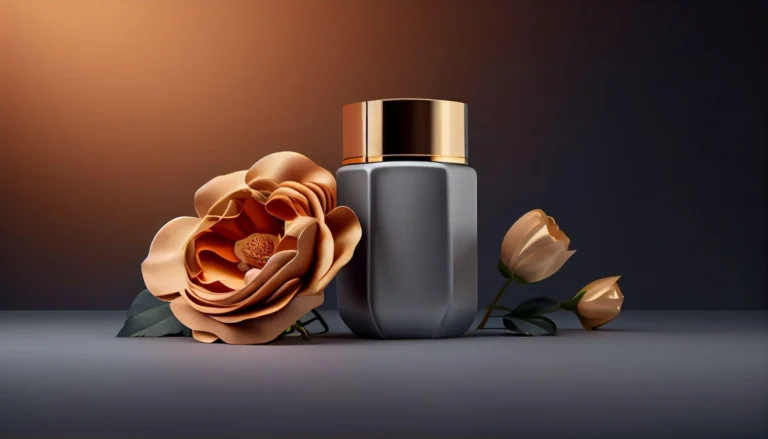There’s a lot to consider when choosing a scent. First is deciding what kind of aroma you like best. Maybe you prefer fresh, fruity scents or floral ones that are soft. Thinking about the mood you want it to create can help narrow it down.
It’s also important to pick one that goes with your lifestyle. An everyday perfume versus something for nights out. And something not too strong if you’ll wear it to work or be active.
Don’t get overwhelmed by all the options at the store. Take your time sniffing samples to find what you really vibe with. We’ll also help you with some important details to know about perfumes.
Know the Notes

Top Notes: The initial scents, designed to make a strong first impression, but not meant to last long. They’re usually fresh, light, and inviting. A classic example is the light, citrusy burst you get from Dolce & Gabbana Light Blue, known for its crisp apple and Sicilian lemon top notes.
Middle Notes: Also known as heart notes, they emerge just as the top notes fade. These scents are considered the heart of the perfume, more enduring, and shape the main body of the scent. Lancôme La Vie Est Belle is a beloved fragrance that showcases middle notes of iris and jasmine, offering a sophisticated floral heart.
Base Notes: These are the longest-lasting scents, forming the foundation of the fragrance. They linger on the skin long after the other notes have dissipated, providing depth. An example is Guerlain Shalimar, with its rich base notes of vanilla, providing a warm, powdery finish that anchors the fragrance.
Find What You Like
It’s important to figure out what kind of smells you enjoy the most. Perfumes come in different “families” like floral, citrus, woody, and oriental. The best way to know is to try some perfumes from each group.
Do you like flowery smells? Then Marc Jacobs Daisy might be for you. It’s got nice violet and jasmine scents that aren’t too strong. Citrus smells like lemon and orange appeal to you? Try Acqua di Parma Colonia. People really like how fresh and sunny it is.
Maybe earthy, natural scents are more your thing. Then check out Le Labo Santal 33. It’s got a famous smell of sandalwood that’s not too overpowering. And if you prefer spicy, rich aromas, take a whiff of Yves Saint Laurent Opium.
Try Them Out

Once you figure out what kinds of smells you like best, the next step is trying perfumes on your own skin. That’s because perfumes react differently on everyone. What one person likes might not work for you.
Stores have small sample bottles you can use, which is perfect for testing. Put some on and wear it all day. This lets you see how the smell changes over time. You can also see how long it lasts on you. And it lets the perfume mix with your own natural smell.
For example, if you try Chanel Coco Mademoiselle, you’ll notice how the bright orange and rose scents change as the day goes on. The patchouli base takes over and makes a deeper smell that sticks around longer.
Check on Your Skin

Give a perfume a few hours to really mix with your natural smell. That lets you experience how it changes from the fresh top notes into the deeper base notes. For example, if you try Dior Sauvage, at first you’ll get that crisp bergamot smell. But after a while, richer wood and spice scents might come through more on you.
The scent will likely be different on your skin than just smelling the bottle or someone else wearing it. Testing takes time, but it’s the only way to know for sure if a perfume really suits your body chemistry.
Follow the Rule – The First One That Catches Attention is the ONE
When testing new scents, pay attention to the ones that really catch your attention right away. Your initial reaction might be telling you something important about what you naturally like. Don’t just dismiss a smell as “okay” because you need to take time to decide.
If a fragrance really stands out to you from the start, that’s a great sign it could be your perfect signature smell. But it’s still important do a full day test to be sure.






